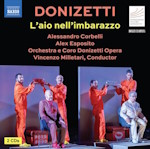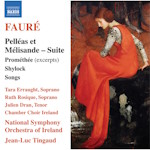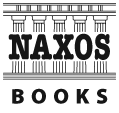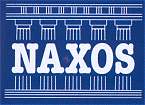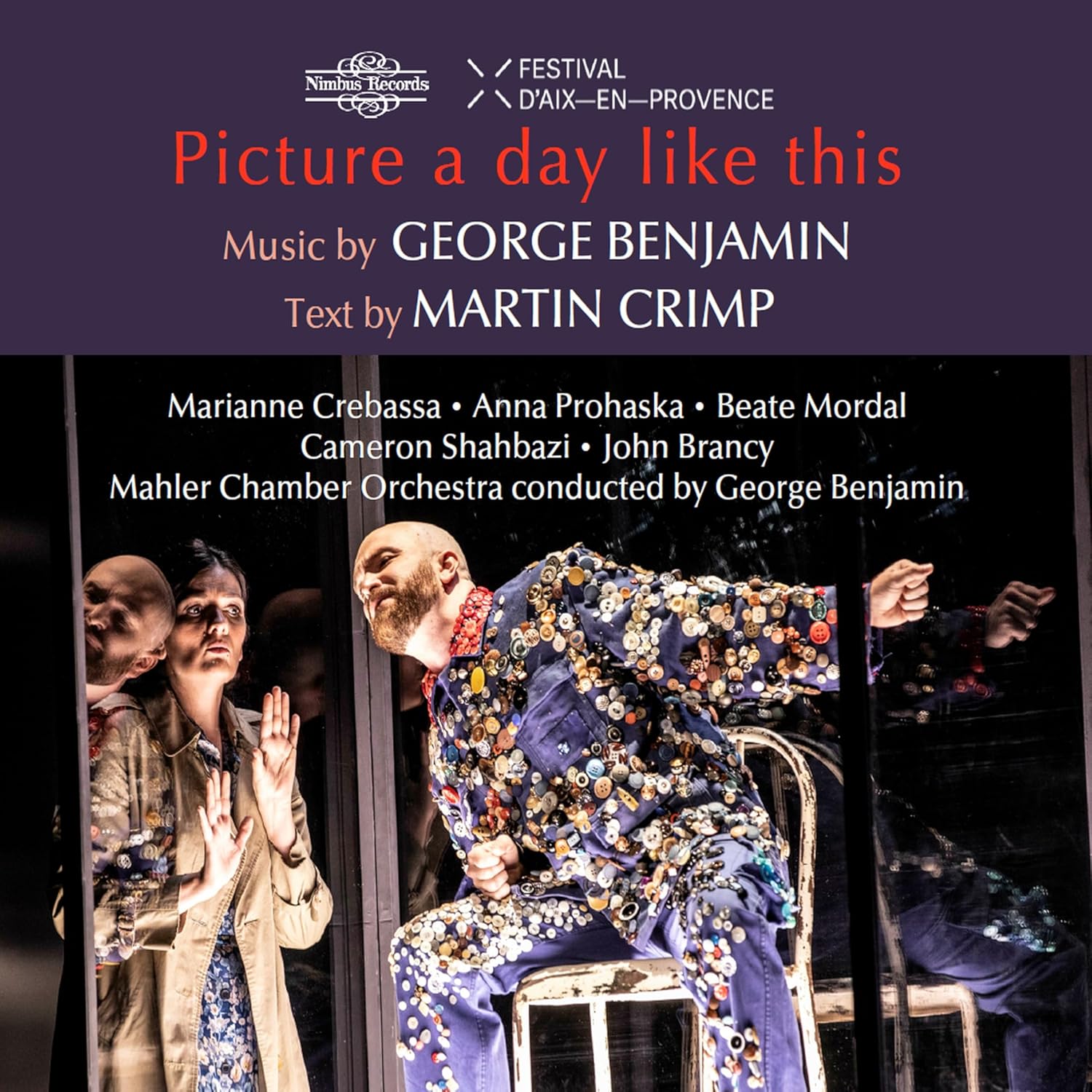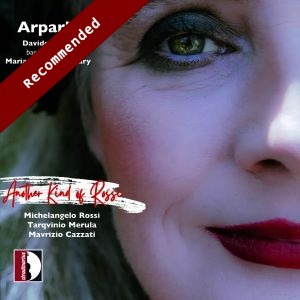
Another kind of Rossi
Arparla: Davide Monti (violin), Maria Christina Cleary (harp)
rec. 2023, Pieve Vecchia di Ginestreto, Pesaro, Italy
Reviewed as a download
Stradivarius STR37325 [74]
We know several composers from 17th-century Italy with the name Rossi. One of them is Salamone, the composer of Jewish origin from Mantua, who has earned fame with his psalms in Hebrew. Then there is Luigi from Rome, who is best-known for his opera Orfeo, which was performed in Paris in 1647. A third is Michelangelo, who is best known for just one work: the Toccata VII, popular among keyboard players for its extreme dissonances.
The latter is the Rossi to whom the disc under review is devoted. He was born in Genoa, but for most of his life he worked in Rome; he probably settled there in 1622, but there is a gap in his biography for the years 1638 to 1649. The Toccate e Correnti d’Intavolatura d’organo e cimbalo was first printed in Rome in 1657, but research has proven that the copper engraving of these pieces took place in the 1630s, the same time that Frescobaldi published his collections of toccatas, and it is up to some debate as to which extent Rossi was influenced by Frescobaldi’s toccatas or just followed his own way in the development of the genre.
It is interesting to note that Rossi’s toccatas never disappeared into oblivion. As late as 1739, the German theorist Johann Mattheson mentioned them in Der vollkommene Kapellmeister, calling Rossi a “diligent visionary”. Some pieces from the collection were published in the late 19th century. This disc includes some toccatas from this edition, the four toccatas and the Partite sopra la Romanesca from a manuscript that is added to the edition of 1657 as it is preserved in the library of Bologna Conservatory.
The title of the edition mentions two instruments, the organ and the harpsichord, but the latter has not to be taken too literally as it refers to any strung keyboard instrument, including the very common spinet. However, on this disc we hear Rossi’s keyboard works on the harp, the 17th-century arpa doppia, to be precise. That is what the word ‘other’ in the title of this disc refers to: we get Rossi’s toccatas in different form.
The harp has undoubtedly played a major role in Western music history. It was highly revered, partly because it was associated with King David, who according to the Old Testament, played it for King Saul, when he was under the influence of evil spirits – which makes it all the more surprising that one will not find that much music specifically intended for the harp.
As it was played in ensemble, it is only logical that it was not specifically mentioned; the same goes for its role in the basso continuo in the 17th century. However, the harp was also a solo instrument, and although it is mentioned in the titles of some collections of music, it was undoubtedly much more frequently played than these titles suggest. Maria Christina Cleary, in her liner-notes, mentions that Rome was full of harpists. Some of these are still known, such as Orazio Michi, who was nicknamed Dell’Arpa. Another was Constanza Da Porte, wife of Rossi’s namesake Luigi, while Marco Marazzoli, also nicknamed Dell’Arpa, was the player of the famous Barberini harp, so called because it was owned by Cardinal Antonio Barberini.
The answer is that the repertoire for keyboard instruments and the harp – and often also plucked instruments, such as the lute and the theorbo – was largely the same. Keyboard and plucked instruments were most common, and this explains why they are mostly mentioned in the titles of printed editions. Sometimes it is explicitly stated that the music is also suitable for the harp; the most famous example is the Obras de música para tecla, arpa y vihuela by the Spanish composer Antonio de Cabezón. In other cases collections include pieces with the explicit reference to the harp. Some composers of keyboard music are known to have been active as harpists, such as Ascanio Mayone. From that perspective there is every reason to look beyond those pieces which explicitly mention the harp.
Maria Christina Cleary plays a triple-rowed harp whose features she describes in the booklet. “It has two outer rows of strings which can be tuned to C major, like the white keys on a keyboard. The inner row consists of seven strings in each octave, where there are separate strings for Eb and D#, and Bb and A#. This points to a mean-tone temperament tuning which is ideal for music from the 17th century. The outer rows can also be tuned in F or G major.” The selection of repertoire depends on what she finds “organic, idiomatic and intuitive music to play”. With “organic” she means “that the music feels as if it were written for the harp, is a pleasure to play and does not require any sort of arrangement. All the notes written in the score are playable on the instrument, the music lies under the fingers, fast musical figures work well, while slower ones allow time to let the strings resonate. On a polyphonic level, the spacing between the soprano, alto, tenor and bass voices exploits the instrument’s capabilities to its fullest without leaving the central octaves of the harp empty. Contrapuntal exchanges are manageable, both technically and acoustically.”
This made her decide to play Rossi’s toccatas, but to ignore most of the correntes, which are also part of the edition. She explains: “Rossi’s correnti, on the other hand, are cumbersome on the harp: the bass (left hand) and the other voices are spread out in a way that is often unwieldy on the instrument. Some sections are more successful with the bass played an octave higher, or the voices of the right hand (soprano, alto and sometimes tenor) played an octave lower.” Those which are best suited to the harp were included in a previous recording (Stradivarius, 2020).
The toccata was one of the main forms of keyboard music of the 16th and 17th centuries, and was still an important genre in the 18th century, as the oeuvre of Johann Sebastian Bach shows. It was a free form, without strict rules, and could take different shapes. Toccatas had their origin in improvisation, and that has left its mark in the toccatas that have come down to us in manuscript or printed editions.
The music of the early 17th century written in Italy has the hallmarks of what is known as the stylus phantasticus. Such pieces are a sequence of episodes of different tempi and rhythm, following each other mostly attacca. This explains why one can experience a toccata as a kind of rollercoaster, quickly moving between different affetti. Although in many cases keyboard and harp are interchangeable, there is an important difference between them. The harp has the possibility of creating dynamic contrasts, which only emphasizes the capricious nature of toccatas. On keyboard instruments this can only be suggested with agogical means.
This is one of the features which makes recordings on the arpa doppia so exciting. That is even more the case when the right temperament has been chosen. In this case it is ¼ comma mean-tone, and this makes sure that the harmonic peculiarities come off to full effect. Maria Christina Cleary takes the improvisatory roots of the toccatas into account; under her hands they are often quite dramatic. As she also explores the dynamic range of her instrument to full extent, these performances are a real alternative to the more common performances on organ and harpsichord. The excellent recording guarantees that the characteristic sound of the arpa doppia is perfectly exposed.
The programme is extended with some pieces in which the harp acts as a basso continuo instrument. Tarquinio Merula was born and died in Cremona but worked at several places during his career. He was educated as an organist and violinist, and worked in several places as organist; in the 1620s he was for some time in the service of the royal court in Poland. In 1631 he was appointed maestro di cappella at S Maria Maggiore in Bergamo, as the successor to the famous Alessandro Grandi, who had died the year before. In the next decades we see him work in turn in Cremona and Bologna. Merula ended his career in Cremona as organist of the cathedral and as organist and maestro di cappella for the Laudi della Madonna. He held these positions from 1646 until his death. The two sonatas performed here are taken from a collection of motets and sonatas, published in 1624. They are in line with the fashion of the time, and – as was very common then – can be played either on the violin or the cornett. Like other composers of the time, he uses harmony for expressive reasons, including strong dissonances. The most marked example is the Sonata I, especially the latter half.
Maurizio Cazzati is of a different generation: his Sonata La Pezzola is taken from a collection published in 1648. He was also educated as an organist and for many years worked in Bologna, where he met quite some opposition for reasons that are not entirely clear. It made him move to Mantua, where he spent the last years of his life as maestro di cappella at the Cathedral. Cazzati left a large oeuvre, most of which he printed himself. Stylistically the sonata played here is not fundamentally different from those by Merula. All of them are written in the stylus phantasticus and that makes them ideal companions to the toccatas by Rossi. Davide Monti delivers thrilling performances, and the two instruments match perfectly.
It is interesting that Maria Christina Cleary opted for a different approach to the realization of the basso continuo. Rather than vertically, she accompanies in a more horizontal style. “I now try to think only of voices, dialogues between them, and rhythmical and melodic counterpoint.”
There is plenty to enjoy and to experience here. I really love this disc for the music, the combination of instruments, and the performances. A special recommendation is well deserved.
Johan van Veen
http://www.musica-dei-donum.org
https://twitter.com/johanvanveen
https://bsky.app/profile/musicadeidonum.bsky.social
Contents
Michelangelo Rossi (1601/02-1656)
Toccata III
Tarquinio Merula (1595-1665)
Sonata Seconda A 2. Canto, (Violino, ouer Cornetto) & Basso [op. 6]
Michelangelo Rossi
Toccata II
Toccata del Sig.r Michel’Angelo non stampate…1700 [in re]
Toccata IV
Toccata I
Altra toccata del Sig.r Michel Angelo non stampata [in la]
Tarquinio Merula
Sonata Prima A 2. Canto, (Violino, ouer Cornetto) & Basso [op. 6]
Michelangelo Rossi
Partite sopra la Romanesca del Sig.r Michel Angelo Rossi Del Violino
Toccata X
Toccata VIII
Del Sig.r Michel Angelo Toccata [in FA]
Toccata V
Maurizio Cazzati (1616-1678)
Sonata La Pezzola, Violino solo, over Violino, e Basso [op. 8]
Buying this recording via a link below generates revenue for MWI, which helps the site remain free





